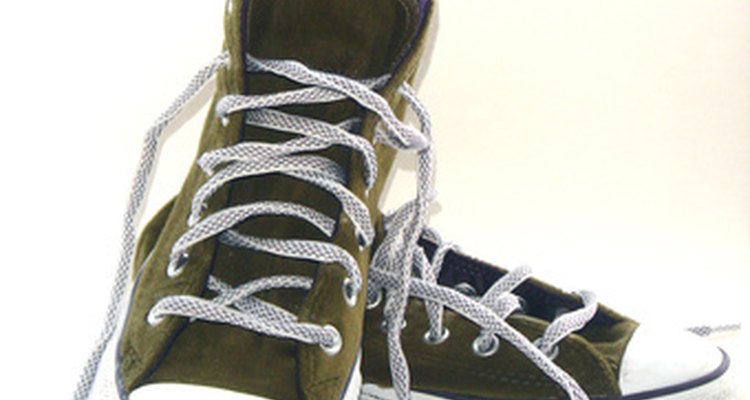
While some shoes can be worn by either gender, many types of dress shoes or athletic shoes are gender specific. Women are lighter, shorter and usually have a lower percentage of muscle mass then men. They also have a lighter bone weight, with softer and more flexible joints. These differences translate to differences in footwear, particularly with athletic shoes. The differences are not just for fashion, they serve to protect males and females from injury.
Sizes
While units for sizing shoes vary around the world, womenâ??s shoes and menâ??s shoes often have different scales for measurement. A Brannock Device can measure both the length and the width of the foot. According to this device, used in the United States, menâ??s shoe sizes are one size larger than womenâ??s shoes. This device comes in many varieties intended for men, women, children, athletic shoes and ski boots. Each additional size is 1/3 inch longer for both menâ??s and womenâ??s shoes. Menâ??s shoes are also often wider than womenâ??s. The Brannock Device measures width, with each width designation separated by 3/16 of an inch. (See References 3)
Shoe Styles
Menâ??s shoes are often categorized by how they are closed or the ornaments present on the shoes. They range from oxfords with closed lacing, Blüchers with open lacing, monk-straps with a buckle and strap, or slip-ons with no fastenings or lacings. Womenâ??s dress shoes are often categorized by heel type. These include high-heels with a 2-inch heel or higher, kitten heels ranging from 1.5 to 2 inches high, wedge sandals where the ankle is higher than the toe, mules with no fitting around the heel, slingbacks secured with a strap around the heel, espadrilles with a cotton or canvas upper, and ballerinas or pumps with a very low heel and much of the instep exposed. The majority of womenâ??s shoe styles have a narrower forefoot, or the front part of the shoe. Many other types of shoes, including clogs, sandals, slip-ons, slippers and boots, are considered unisex and vary only in size and aesthetic design.
Athletic Shoes
Regardless of size differences, there are anatomical differences between men and women extending to their feet. These differences include women having thicker ankles and calves, higher arches, and narrower heels. (See References 2) Female shoes often have a greater heel bevel, or rounded tread on the end of the heel, to improve stability and cushioning. This helps to compensate for increased force on the kneecap and greater external rotation at the heel strike. A womanâ??s foot is also 3% to 4% narrower than menâ??s, particularly in the rear of the foot. (See References 4) Womenâ??s feet are also more flexible, and running shoes often provide a different tread to allow the foot to flex in a certain way. In addition the arch height of a womenâ??s foot as well as overall foot flexibility can change with varying levels of hormones, which can affect how a woman walks. As such, many womenâ??s running shoes have a specific design allowing for extra space between arch and the sole. (See References 4) Womenâ??s shoes also often contain greater mid-foot support due to a greater arch. (See References 1)
Related Articles

Types of Women's Shoes

Pros and Cons of Rocker Sole Sneakers

What Does Shoe Width E, EE, D, and DD ...

High Heels for Plus-Size Women
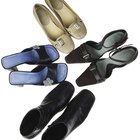
What Is the Difference Between a Narrow ...

The Best Cushioned Shoes for Overweight ...

Difference Between Women's Wide & EEE ...
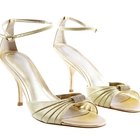
The Differences Between a Flip-Flop and ...

Low Vs. High-Top Athletic Shoes

Ankle vs. Crew Socks

The Difference Between Loafers & Boat ...

Differences in Men's & Women's Nike ...
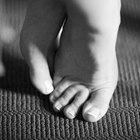
How to Determine the Width of ...

What Do the Numbers Mean on New Balance ...

Difference Between Clogs & Mules

What Does E Mean in Boot Size?

What Shoes Look Best With a Trapeze ...

Tuxedo Shoes vs. Dress Shoes

Types of Nike Shoes
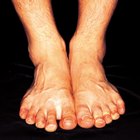
How to Measure Your Feet With a Regular ...
References
Writer Bio
Janelle Bartels lives and works in New York City. After earning a B.A. from the University of Nebraska with a Regent's Scholarship, she moved to the Big Apple and received an M.A. in anthropology from Columbia University. Bartels has been writing academically for more than 10 years.
Photo Credits
Sneakers image by irum from Fotolia.com